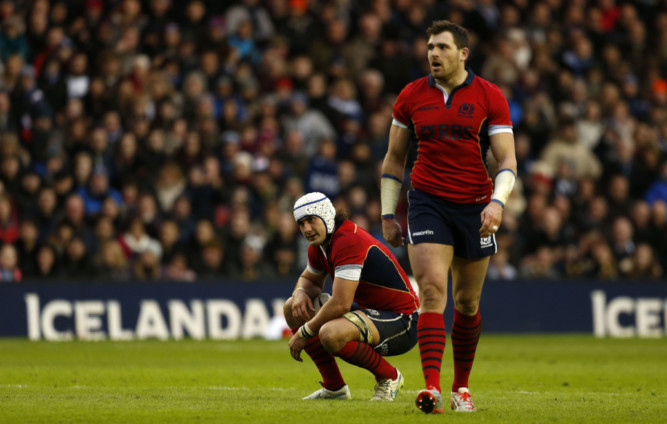It was just like 2007, except this time Scotland got the flying start before they shot themselves in the foot.
Similarities between the 2015 version of Scotland and Italy on Saturday and that of eight years ago were difficult to ignore. The obvious first one is that Italy won, only for the second time outside Rome in the RBS 6 Nations, and deservedly so.
Although some will as in the loss to Wales rail against a referee, we can dismiss that nonsense right now. But for their confused first ten minutes, Italy wholly merited victory even if Scotland effectively handed it to them in a ludicrous final five minutes that had so much wrong with it from all participants on the park, including the officials it must have had the professional coaching teams of both nations wincing.
When the dust had settled, George Clancy headed between the posts to award the penalty try that won the game and Italian captain Sergio Parisse finished what appeared to be a supplicant prayer for deliverance on his knees, Scotland’s Vern Cotter project looked holed below the waterline, listing badly.
A third 6 Nations whitewash in a decade seems unavoidable, the meagre strength in depth exposed brutally once again.
At least in 2007 there was no whitewash, but on Saturday there was a definite feeling of dj vu. Scotland came in eight years ago on a wave of optimism and tried to unveil a new wide game. Instead, three gift tries, via two interceptions and a charge down, had them insurmountably 21-0 down after 12 minutes.
On Saturday Scotland were still just about riding the optimism of the autumn despite the two starting defeats in this championship, and this could not have been an illusion; a record crowd of 62,000 for the fixture were convinced enough by the team to show up.
The Scots seemed to want to unveil a running game from the lack of tactical kicking they attempted, but whether this was to orders like in 2007 is open to debate. Vern Cotter’s voluble expressions of frustration from the coaches’ box suggested they were not.
The coach had preached pragmatism and earning the right to go wide in the week. His team seemed spooked by the early driving maul that produced Italy’s first try, and hardly played to the corners or for territory at all.
It didn’t look or sound as if his team adhered to the gameplan; there was even talk of “getting carried away” in the post-match post-mortem. The continuing issue with discipline another 13 penalties against Scotland makes one wonder how Cotter addresses what he continually refers to as a “humble and hardworking group” and how stringently.
Despite all this, Scotland led this game from the 40th second of the match to 40 seconds from the end. They led 10-0, 13-6 and 16-8 at three points in the first half, not out of sight but usually a position of comfort.
If they’d not made errors that were simply inexplicably nave they might have had more to spare. These mistakes were by senior players as well, Sean Lamont fielding a kick-off and stepping in touch which allowed Italy to showpiece their driving maul for Josh Furno’s try, to impress the referee and frighten the wits out of the Scots.
Then after Laidlaw had kicked a penalty Johnnie Beattie fumbled a routine kick-off into the chest of Blair Cowan; offside, penalty and a cheap three points for the deeply unconvincing Kelly Haimona.
Worst of all was the chaos after Haimona hit the post with a penalty just before half-time an award coming after two successive penalties at the scrummage against Scotland. Somehow Greig Laidlaw, easily the smallest player on the field, was the one designated to be the sweeper in front of the posts, the ball bounced over him and Giovanbattista Venditti pounced and wrestled his way for the score.
This was exactly one of the small details that the team had preached about during the week left neglected. It has been a recurring problem with Scotland in recent times and something Cotter is perhaps just becoming familiar with you patch up one leak in the team’s overall game, but the water simply squirts out of another bit.
The final denouement was a catalogue of calamities, of which Peter Horne’s missed touch he pulled a calf muscle in the act of kicking was just one.
There were actually two at the key breakdown in midfield, with both Alex Dunbar and replacement Hamish Watson off their feet contesting the ball inviting Clancy to penalise Scotland. Once Italy were in position to attack with their maul as a result of this, their success was absolutely inevitable.
It leaves Scotland winless after three matches, with two to go against probably the best teams in the championship. That optimism is non-existent now.
